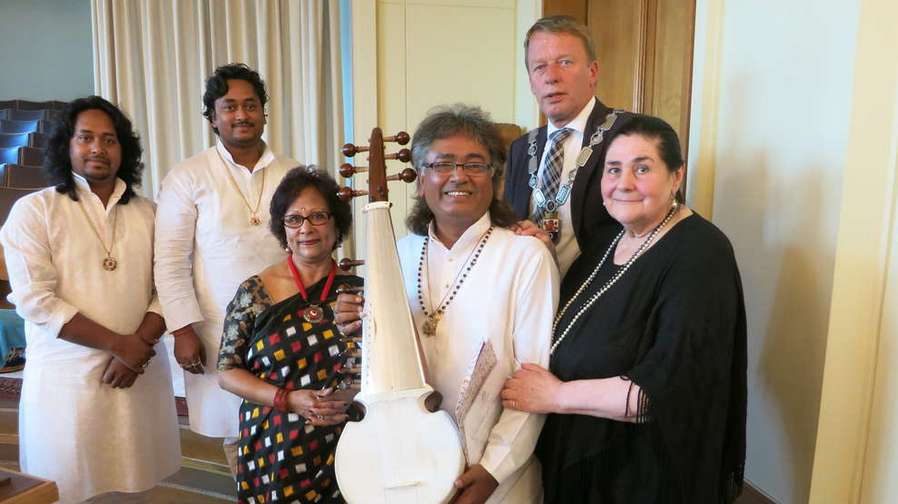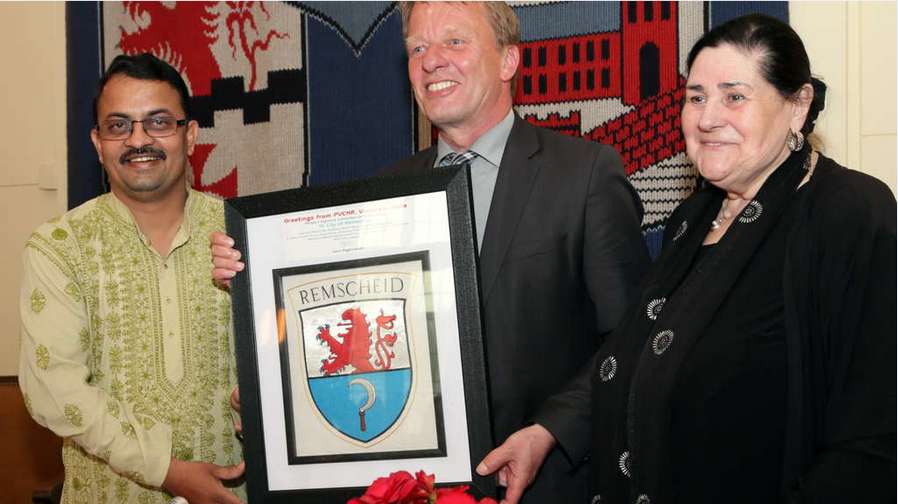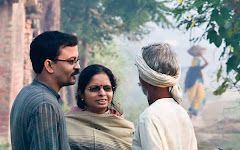Despite legislations and protests by Nobel Peace Prize winner Kailsh Satyarthi, activists like Dr. Lenin Raghuvanshi and NGOs like PVCHR, over 55 million children in India are doomed. They are made to work in inhuman conditions. They do a variety of things: silversmith work, tea farming, stone quarrying, cigarette making, fireworks, fishing, embroidery, and much more. An untold number is also forced to serve as domestics, shop boys, prostitutes, and involved in child trafficking. Many even end up mutilated and forced to beg. Here’s an indepth report by Shruti, as part of Different Truths special feature on World Day Against Child Labour (WDACL).
#WorldDayAgainstChildLabour2016 #WorldDayAgainstChildLabour #WDACL #ILO
The carpet belt of Mirzapur-Bhadohi, Varanasi in eastern UP was the Karmabhoomi (work place) of Kailsh Satyarthi, Nobel Peace Prize winner, in the early part of his crusade against child labour and trafficking. Satyarthi worked tirelessly in the carpet belt of Bhadohi and Mirzapur, notorious for exploiting child workers. It was his initiative to start the Rugmark, a label given to carpet makers for guaranteeing that the product is child labour free.
“On December 10, 1996, he led a Shoshanmedh Yajna (Slay-exploitation Yajna) at Dashashwamedh Ghat after rescuing children from Jansa area,” said Lenin. “I sat on 71-hour-dharna at the district headquarters in December 1997 for rescue and rehabilitation of child labourers. It was Satyarthi, who ended my fast.”
The only feasible path to solve the problem of child labour is to guarantee children a better level of education.
More than 55 million children are working in India, mostly “from Dalit, tribal and other backward castes in India” and “all out of school,” which is “cause for great concern.”
In spite of its booming economy, “India is still very much a patriarchal and caste-based society with gender discrimination. The destructive effects of gender discrimination, patriarchal oppression and the semi-feudal society so prevalent in 21st century India are manifest in our 55 million children, employed at times in subhuman conditions.”
Many of these children are under the age of five and put their lives at risk for a miserly salary. Similarly, “a large fraction of these child labourers are working as slaves, bonded to their “jobs”, with no means of escape or freedom, often stuck in their “job” until they repay their parents’ loans.
These children do a variety of things: silversmith work, tea farming, stone quarrying, cigarette making, fireworks, fishing, embroidery, and much more. An untold number is also forced to serve as domestics, shop boys, prostitutes, and involved in child trafficking. Many even end up mutilated and forced to beg.
Child labour is closely related to poverty and the lack of a proper education, especially when parents cannot first maintain their children. The situation is more complicated for girls, who live in a shadowy world, taking care of their younger siblings and helping their mother in household chores, rather than going to school.
“Scheduled Castes and Tribes Act should be improved to prevent atrocities and discrimination against backward classes and provide more resources.” But what is needed above all is “a cultural change that eliminates the tragedy of child labour at its roots”.
In 2004, the PVCHR “adopted” three villages and a suburb in a trial project called “Jan Mitra Gaon” (people-friendly village) that included the reopening of primary schools, the end of forced labour, making education for girls compulsory and the adoption of non-traditional education practices.
In vast areas of the Indian countryside primary education is non-existent, but the PVCHR was able to open educational facilities for children in 200 villages.
Child labour continues to be a significant phenomenon in India. According to the NSS (National Sample Survey) 66th round (2009-10), there are 49.84 lakh child labourers across the country, and 23.3 per cent of 15 to 18-year- olds are engaged in some income-earning activity. Uttar Pradesh tops the list as the state with highest number of child labour cases in the age group of 10-14 years and third in terms of worst record between 10-18 years 1 .
Child labour is a concrete manifestation of violations of a range of rights of children and is recognized as a serious and enormously complex social problem in India. Working children are denied their right to survival and development, education, leisure and play, and adequate standard of living, opportunity for developing personality, talents, mental and physical abilities, and protection from abuse and neglect.
To curb the child labour Dr. Lenin Raghuvanshi was the founding member of Bachpan Bachao Andolan (BBA) and rescued thousands of child labour from carpet, domestic child labour, sports, sarees, leathers, brick kiln, agriculture, glass industry and trafficking. During the rescue Dr. Lenin realised for that due to the pathetic economic condition again the children sent for it. So, to prevent child labour Dr. Lenin founded PVCHR and created Indrawar as child labour free village on May 1, 1996, in presence of Pharis Harvey of ILRF, USA & Abigail Abris of RFK memorial centre for Human Rights through four prolong interventions.

In 2001, with the support from CRY the organisation initiated for child rights centric village and focussed on the child protection issues in Harhuwa and Badagaon of Varanasi districts with the most marginalised communities as during rescue all labour belongs to Dalits, OBCs and minorities. Most of the target communities were working in brick kiln because it was income generating to them. The children spent nine months along with their parents in the brick kiln industry. Children in and around the brick kiln areas are drawn into labour as they tend to help their parents by arranging the bricks for drying and collecting the broken and improperly moulded bricks. Due to the tenancy system the women and children are not counted as worker. It is trend by the employers to show men as employees and it provides opportunity to escape from ensuring the service to women and children. Once they get older, they are drawn into the trade, having being trained at a young age. This age group is the most vulnerable to exploitation and abuse. The National Policy of Children, 2013, declares that all children from 0 to 18 years need to be protected and provided with all the facilities of health, education, nutrition and protection.
In its findings, the organisation found many female children are subjected to physical and sexual abused. Radha (name changed) 15 years was sold to the brick kiln owner by her relative in Jaunpur for two months she was sexually abused by the brick kiln owner. Baiju Yadav, son of Palo Devi, who was also helping his parent was shot by brick kiln owner as he saw him in compromising positions with different female worker.
In two and half year (July 2010 – 2012), the organisation rescued and released 243 bonded labour from eastern part of Uttar Pradesh. But in this process, we experienced the apathy of the administration for not registering case under Child Labour (Prohibition and Regulation) Act, 1986, and providing rehabilitation package of Rs. 20,000 and not benefiting children with any social service scheme. After rescue and identification child are not handed over to parents but were sent to Child Welfare Committee. The influence and muscle power of owners are the main hurdles for identification, rescue and rehabilitation. This is due to the evils of the caste system of India.
In last 13 years, slowly and gradually PVCHR expanded it working areas such as seven districts of Uttar Pradesh with intensive engagement in 200 villages with focus on child rights centric village and torture free model villages. After intensive engagement and awareness building now the parents working in the brick kiln are sending their children to school. In Sakara village many girls enrolled in residential school and providing tuition to the weak children to maintain retention in the school.

PVCHR tabled the issues of bonded labour Mushar to the National Human Rights Commission (NHRC) in open hearing on atrocities against schedule caste (SC), in Varanasi, on November 25 and 26, 2013, for providing them with social service scheme. In the hearing, NHRC ordered for providing work to the Mushars during rainy season under MNREGA to prevent malnutrition, hunger death and bonded labour. During the visit of Anil Parashar to Varanasi and Chunar he issued notice to District Magistrate Varanasi and Mirzapur to provide all detailed information related to brick kiln including the total number of labourers male, female and children with their residential addresses and age 2 .
In 2013, the organisation organised public hearing on bonded labour and child labour including the three commissions National Human Rights Commission, National Women Commission and National Commission for Protection Child Rights and ex-Director General of Police, Uttarakhand. In the hearing the cases of child labour from western part of Uttar Pradesh were presented that children are involved in hazardous industry such as in lock industry, meat industry, agriculture and recycling of the old mobile.
To eliminate child labour PVCHR provided psycho-social and legal support to survivors, meta legal intervention, legal intervention, medical support, protection and solidarity, rehabilitation of community, peoples’ advocacy, public hearing, awareness and child participation so, they are healed and transformed as human rights defenders; they are fearless and now ready to face and confront their perpetrators; they are now in a better position to reclaim and attain their rights.
It was specifically used for the comprehensive advocacy as on the whole as a very non–expensive approach. The cases of bonded labour across India were monitored in daily newspapers and immediately complaint was sent through email to the various concerned authorities.
The Musahar ghetto of Sarai village is bonded labour free village. This was possible with the tireless process and community aspiration for change the community people decided not work as bonded labour in any establishment and now working under MNREGA Scheme. They understood the importance of education and now they enrolled their children in near government primary school 3 .
Child labour is a complex issue linked with socio-economic and political situation in anthropological development of specific marginalised communities. Elimination of child labour means breaking the silence of community through accessibility at common resources in government schemes of children and their parents in context of child rights approach.
© Shruti Nagvanshi
Pix sourced from Shirin Shabana Khan and Net.













